Rome, also known as the eternal city, was founded in 753 B.C. by twin brothers Romulus and Remus, according to a founding myth expanded by Virgil. Rome is located in the Italian Peninsula on the third largest Italian river, the Tiber. It is the capital of Italy with 2.8 million residents in 1,285.3 square kilometers. In the ancient times it had been capital of the Roman Kingdom, the Roman Republic and the Roman Empire. It has been the seat of the Papacy since first century AD and in the eighth century it became the capital of the Papal States. In 1871, Rome became the capital of the Kingdom of Italy and it is currently the only city in the world that includes an independent state, the enclave of Vatican City. It is on this account that Rome is identified as the capital of two states.
1. The Colosseum
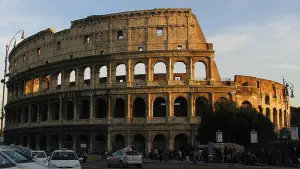
Construction of the Colosseum, also known as the Flavian Amphitheatre, began in the regime of the emperor Vespasian in 70 AD and was completed in 80 AD by his successor Titus. It was further developed in the reign of the emperor Domitian. All these three emperors constitute the family Flavius, hence the name, the Flavian Amphitheatre. It is located to the east of the Roman Forum, in the center of the Italian city Rome. In spite of its ruined appearance, the Colosseum is iconic to the city of Rome and its image appears on the Italian version of the five-cent euro coin. The Colosseum is the largest amphitheatre or an open air entertainment venue in the world, with an estimated seating capacity of 50,000-80,000 spectators. The oval shaped amphitheatre was built of stones and concrete. It was primarily used for competitions between gladiators, executions, and public shows like mock animal hunts, battles, and comic or tragic dramas based on Greek mythology. In early medieval era, such use of Colosseum was stopped and it was later on used as a fortress, a workshop, or a Christian shrine.
2. The Roman Forum
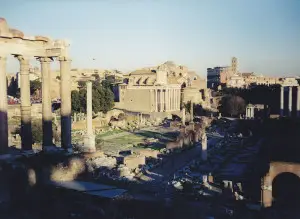
The Roman Forum, originally known as Forum Magnum, was a rectangular marketplace situated in the small valley between the Palatine and Capitoline Hills, in the center of Rome. It was the largest Roman public meeting place for centuries. The forum is surrounded by many historical buildings like the Regia, Temple of Vesta, and Complex of the Vestal Virgins. For many centuries the big forum remained a hub of Roman public life and it was the site of victory processions, criminal trials, public speeches, elections, gladiatorial competitions, and commercial exhibitions.
3. Fontana di Trevi
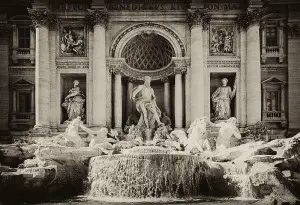
Fontana di Trevi or the Trevi Fountain is located in Trevi, Rome. It is 26.3 meters high and 49.15 meters wide. It is the largest Baroque fountain in the city, characterized by its typical style identified by exaggerated motion, clarity, dramatic beauty, and grand sculpture. It is the most famous fountain in the world. Its renovation was initiated by Pope Urban VIII in 1629. In 1730 Pope Clement XII assigned its renovation to Salvi. It was finished in 1762 by Giuseppe Pannini. In January 2013, the Italian fashion company announced that they would sponsor a 20 month, 2.2 million euro restoration of the fountain. Traditionally people throw coins in it, believing that whoever throws a coin in it will revisit Rome. More than 3,000 euros are thrown in it daily.
4. The Pantheon
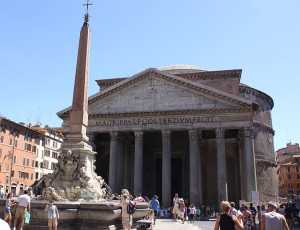
Located in Rome, the Pantheon was built to honor all the Roman gods. It was first built by Marcus Agrippa in the reign of the Emperor Augustus. It was rebuilt in 126 AD in the reign of the Emperor Hadrian. Built more than 2000 years ago, the Pantheon’s dome is still the largest non-reinforced concrete dome in the world. The width of the dome is equal to its internal height, being 43.3 meters. Since its construction, the building remained in constant use. It is one of the best preserved Roman structures. Since the seventh century, it has been used as a church. It has been a Roman Catholic Church, dedicated to St. Mary and the Martyrs. It is also known as Santa Maria della Rotunda.
5. Spanish Steps

The Spanish Steps are a set of 135 steps in a single monumental stairway, built in 1723-1725 in Rome. On behalf of the Kings of France, and with coordination between the Bourbon Spanish embassy and the Trinita dei Monti church, it was built by the French Diplomat Etienne Gueffier with the funds of 20,000 scudi. A competition was held in 1717 to select the designer, and the winner was a lesser known architect, Francesco de Sanctis. He designed it along with the famous architect Alessandro Specchi. Known as Scalinata, the set of Spanish steps is the widest staircase in Europe.
6. Piazza Novona
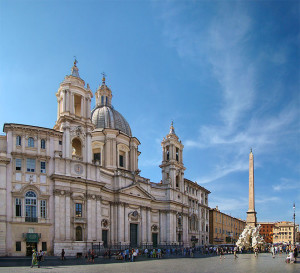
Piazza Navona was built in Rome, Italy in the first century AD. It is a city square located on the site of the Stadium of Domitian. Ancient Roman spectators visited the place to view agones or games, therefore the place was known as Circus Agonalis or the competition arena. In the fifteenth century the Campidoglio city market was shifted to this site and Piazza Novona then became a centre of art and Baroque Roman architecture. It was specially developed during the pontificate of Innocent X, who reigned from 1644 to 1655 and whose family palace faced Piazza Novona.
7. The Vatican Museums
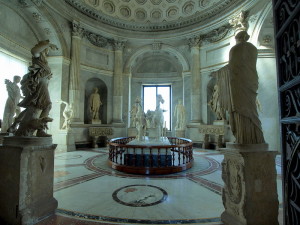
The Vatican Museums, located in the Vatican City State, Rome, are among the best museums in the world. They house some of the most famous sculptures and the most valuable artworks of the Renaissance. Roots of these museums are traceable to the sculpture of Laocoon and his Sons. This sculpture was found by a farmer on January 14, 1506 near the Basilica of Santa Maria Maggiore. It was bought by Pope Julius II, who founded the museums in the early sixteenth century. The ceiling of the Sistine Chapel was decorated by Michelangelo and the Stanze della Segnatura was decorated by Raphael. More than five million people visited these museums in 2011.
8. The Capitoline Hill
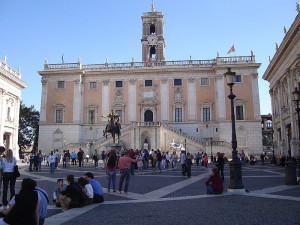
The Capitoline Hill is one of the Seven Hills of Rome. It is situated between the Forum and the Campus Maritus. The English word capitol is derived from the Capitoline hill. There are a few ancient ruins, housing the Capitoline museums. They include Piazza, an urban plan designed by Michelangelo. The Roman maiden Taipei was punished for treachery by being thrown from the hilltop. The fifth King of Rome, Tarquinius Priscus, founded the Capitoline Temple on the summit of the hill. The temple of Jupiter was also made on the orders of Tarquinius Priscus.
9. Castle Sant’ Angelo

Castle Sant’ Angelo, meaning the castle of the Holy Angel, is also known as the mausoleum of Hadrian. It is a cylindrical towering building in Parco Adriano in Rome. The Roman Emperor Hadrian ordered it built as a tomb for himself and his family. It was built between 130 AD and 139 AD, on the right bank of the third longest river in Rome, the Tiber. Hadrian’s ashes were kept here for one year after his death in 138 AD. His wife Sabina’s remains and the remains of his first adopted son were also kept here. Ashes of the succeeding Emperors were kept here in the castle at a location which is now known as the treasury room.
10. Piazza del Popolo
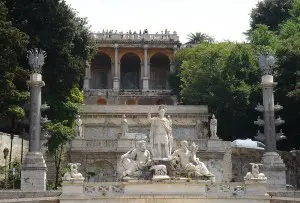
Piazza del Popolo, meaning the people’s square, is an urban square in Rome. In the north east corner of this place is located the Church of Santa Maria del Popolo. The Piazza is located inside the northern gate of the Aurelian Walls. It was a place of public executions in Rome for many centuries. The famous architect Giuseppe Valadier designed the Piazza between 1811 and 1822. A tall Egyptian four-sided monument, with the pointed peak like a pyramid, is fixed in the center of the piazza. Built by the Egyptian Pharaoh Rameses II, this obelisk was brought from Egypt in 10 BC by order of Augustus and was erected originally in the Circus Maximus. It was shifted to the Piazza in 1589.
Conclusion
The current St. Peters Basilica was built by Michelangelo and the Sistine Chapel was also painted by him. In addition to Michelangelo, other great masters in the history of art like Bramante, Bernini, and Raphael were residents of Rome and made invaluable contributions to its development. Museums of Rome are like paradise for art lovers. Rome is one of the most visited cities by tourists and having once visited it, everyone wishes to revisit it; therefore people like to throw coins in the Trevi Fountain. The history of Rome is extended over 2,500 years and it justifies literally the proverb that Rome was not built in a day.










Leave a Reply